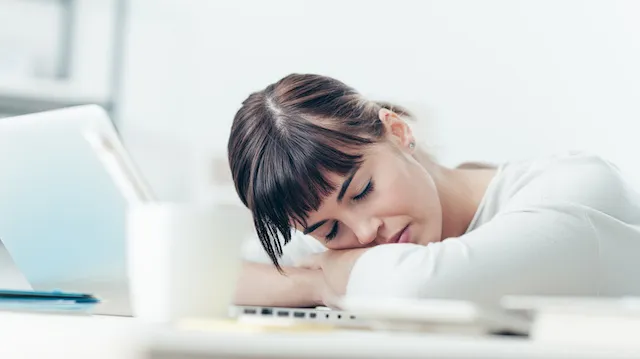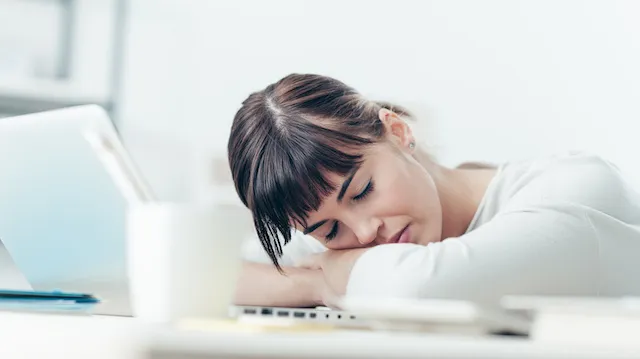We have all experienced it: the dreaded afternoon slump. As you try and focus on your chaotic work schedule, you can’t help it — you lose concentration, your eyes are heavy and you can’t stop watching the clock. You get through it, but are you as productive as you were in the morning?
Productivity is all about getting stuff done, moving on to the next task, completing one goal after the other. If you’re an afternoon zombie, you won’t get as much work done — which results in lower productivity, cutting into company costs.
“Nap time” may seem counterintuitive when it comes to profitability, yet some businesses have already seen the hidden dollar signs when catching up on Z’s.
Napping boosts productivity — the proof is in the pudding
There have been dozens of small studies conducted, focusing on the workplace benefits of napping. Although the concept of napping during working hours may seem a touch odd, it’s actually the norm in a number of European countries, as well as Latin America.
There has to be some sort of benefit, right?
A study published in the Journal of Occupational Environmental Medicine found that nearly 40 percent of American workers are fatigued, costing $136 billion in lost productivity. Surprisingly, 84 percent of those costs aren’t associated with absences but reduced work performance.
When employers have a quick afternoon nap, their overall focus, level of concentration and mood improve. Based on the findings of one highly influential brain researcher, creativity is also a key area that suffers with lack of sleep. Vincent Walsh is a professor of human brain research at University College London. He reported that the current sleep schedule we’ve created, which focuses on just one long sleep through the night, began at the dawn of the industrial revolution. He suggests a nap between 30 and 90 minutes each afternoon, allowing the brain to have some “downtime” — thus improving productivity.
Report: Can You Benefit From A 20-Minute Cat Nap?
Another study, published in 2008 in Behavioural Brain Research, stated that when comparing caffeine (200 milligrams), napping (60 to 90 minutes) and a placebo, a power nap was the most effective in terms of memory tasks.
Even NASA agrees that napping is the way to go. An official NASA study reported that when napping for just 26 minutes, individuals can boost performance levels by 34 percent. Before we discuss what occurs at a neurological level, here are a few key pieces of information to keep in mind (and pass on to your boss):
- The best time to nap is between 1:00 p.m. and 3:00 p.m., when workers experience a biological energy dip.
- Depending on the length of your nap, you will achieve different results. Within phase two sleep, which is achieved after approximately 20 minutes, you will boost motor skills and alertness. After 40 minutes, slow-wave sleep is achieved, improving memory. REM sleep is not experienced until around 90 minutes of sleep, which is known to enhance creativity.
- Studies have shown that a nap up to 90 minutes in the day will not interfere with your ability to sleep at night — as long as you do not nap within three hours of your bedtime.
- Naps may not just benefit cognitive functioning, but heart health as well. Within one study, nearly 24,000 Greek men were examined. Those who napped three times weekly were 37 percent less likely to die from heart disease.
How can a quick nap help improve productivity?
It’s clear that researchers have shown naps do improve productivity — but how? Scientists suggest that power naps work on a neurological level. EGG patterns have demonstrated that when you’re fatigued, the neurons responsible for your memory are essentially turned off.

Some argue that naps should be either around 20 minutes or 70 to 90 minutes in order to avoid sleep inertia. In terms of these recommendations, you allow yourself to sleep but do not reach the deepest stage of sleep. When a nap is over an hour, you cycle back through all three brain waves — alpha, theta and delta. This will make it easier to instantly regain alertness when you awake.
We are slowly seeing a culture shift in terms of workplace napping, and if companies like Google and Pfizer encourage napping, you know that it must support their overall profit margins. You may not have a high-tech “energy pod” in your office, but all you need is a quiet, dark space to boost cognitive functioning so that you can tackle the afternoon like never before.
—Krista Hillis
Krista Hillis is passionate about nutrition, mental health, and sustainable practices. She has her Bachelors in Psychology and Neuroscience and is still active in her research. Studying both the body and mind, she focuses on natural health and balance. Krista enjoys writing based on her ability to inspire others and increase overall awareness.
Sources:
http://www.ncbi.nlm.nih.gov/pubmed/17215708
http://www.telegraph.co.uk/news/science/science-news/10878222/Bosses-should-allow-staff-afternoon-naps-at-work-to-boost-productivity-scientists-say.html
http://www.sciencedirect.com/science/article/pii/S0166432808002416
http://www.executivestyle.com.au/why-you-need-a-nana-nap-2pgd1
http://www.inc.com/articles/201108/sleeping-on-the-job-should-your-employees-take-naps.html

